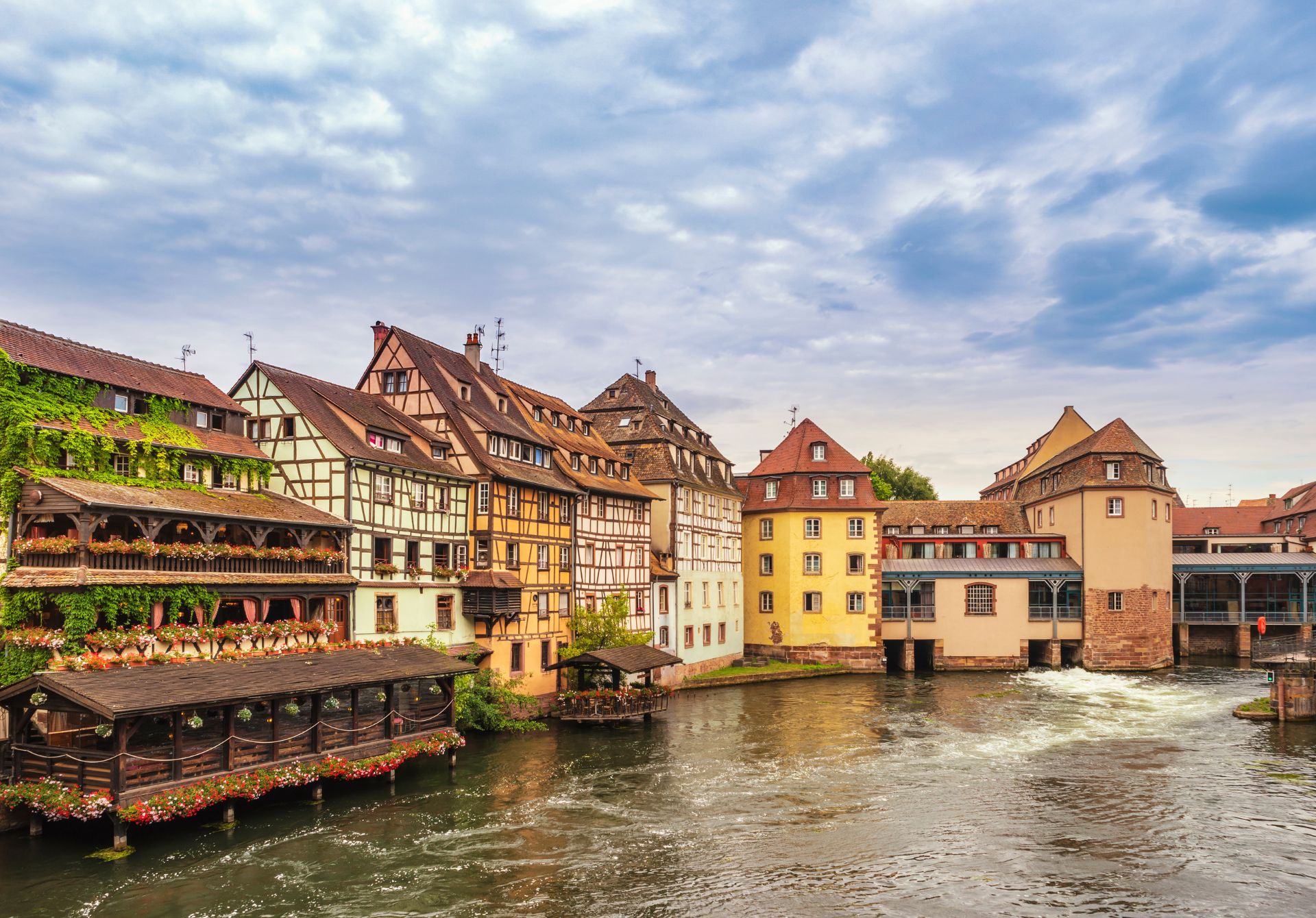Walking through Strasbourg’s cobblestone streets feels like stepping into a fairy tale, and nowhere is this more evident than in the city’s stunning collection of half-timbered houses. These architectural gems, with their distinctive wooden frameworks and colorful facades, tell the story of centuries past while creating one of Europe’s most photographed streetscapes. For travelers seeking authentic medieval charm combined with modern Alsatian culture, Strasbourg’s half-timbered district offers an unforgettable experience.
What Makes Half-Timbered Architecture So Special?
Half-timbered construction, known locally as “colombage,” represents one of medieval Europe’s most ingenious building techniques. The method involves creating a wooden skeleton of vertical posts, horizontal beams, and diagonal braces, with the spaces filled using materials like clay, straw, and later, brick or stone. This technique wasn’t just practical—it was revolutionary for its time, allowing builders to create sturdy, multi-story structures while conserving precious stone materials.
In Strasbourg, these buildings date primarily from the 15th to 17th centuries, when the city was a prosperous trading hub. The exposed timber framework creates those iconic geometric patterns you’ll see throughout the historic center, each telling a story of medieval craftsmanship and urban planning.
Where to Find the Most Spectacular Examples
Strasbourg’s UNESCO World Heritage Grande Île district houses over 2,000 half-timbered buildings, making it one of Europe’s largest concentrations of this architectural style. The most famous cluster surrounds the stunning Strasbourg Cathedral, but savvy travelers know the real gems are tucked away in quieter neighborhoods.
- Petite France: This postcard-perfect quarter features the city’s most photographed half-timbered houses, many dating from the 16th and 17th centuries when tanners, millers, and fishermen lived and worked here
- Place Kammerzell: Home to the legendary Maison Kammerzell, a 15th-century masterpiece that now houses a renowned restaurant
- Rue du Bain-aux-Plantes: A quieter street where you can admire beautifully preserved examples without the tourist crowds
- Ponts Couverts area: Where medieval towers frame half-timbered houses reflected in the canal waters
The Stories These Walls Could Tell
Each half-timbered house in Strasbourg has survived wars, floods, and centuries of change. During World War II, many of these structures served as hiding places and secret meeting spots for the French Resistance. The famous Maison des Tanneurs, built in 1572, once housed leather workers who processed hides using the flowing waters of the Ill River—you can still see the wooden galleries where hides were hung to dry.
Insider Tip: Look for the carved symbols and decorative elements on the timber frames. Many feature religious motifs, guild symbols, or the personal emblems of wealthy merchant families who originally commissioned these homes.
The Maison Kammerzell stands as perhaps the most remarkable example, with its intricate carvings depicting everything from zodiac signs to biblical scenes. Built for a cheese merchant, it showcases how successful traders displayed their wealth through architectural extravagance.
Planning Your Half-Timbered House Tour
The beauty of exploring Strasbourg’s half-timbered architecture lies in its accessibility—most examples are concentrated within the easily walkable Grande Île. A typical tour can cover the major sites in 3-4 hours, though photography enthusiasts often spend entire days capturing different angles and lighting conditions.
- Best time to visit: Early morning (8-10 AM) for soft lighting and fewer crowds, or late afternoon (4-6 PM) when the timber catches warm golden light
- Weather considerations: These buildings look spectacular in any weather, but light rain creates beautiful reflections in the canal areas
- Photography tips: Wide-angle lenses work best for capturing entire facades, while detail shots showcase the intricate woodwork
- Guided tours: Local guides offer insights into construction techniques and historical context that you’d miss exploring alone
Beyond the Architecture: Living Heritage
What makes Strasbourg’s half-timbered district truly special is that these aren’t museum pieces—they’re living, breathing parts of the city. Many house restaurants, boutiques, and even private residences. You can dine in a 500-year-old building, shop for local crafts in medieval merchant houses, or stay overnight in carefully restored guesthouses.
The city has invested heavily in preservation, with strict regulations governing renovations and modifications. This commitment ensures that future generations will experience these architectural treasures much as medieval residents did, complete with creaking wooden floors and thick timber beams that have weathered centuries of Alsatian seasons.
Making the Most of Your Visit
Smart travelers combine their architectural exploration with Strasbourg’s other attractions. The Christmas markets (November-December) transform the half-timbered quarter into a winter wonderland, while summer brings outdoor dining opportunities where you can enjoy local Alsatian cuisine surrounded by medieval splendor.
For those interested in hands-on experiences, several workshops offer traditional timber-framing techniques, allowing visitors to understand the complex joinery methods that have kept these buildings standing for centuries without a single nail.
Your Medieval Adventure Awaits
Strasbourg’s half-timbered houses represent more than just beautiful architecture—they’re windows into medieval life, testaments to human ingenuity, and living proof that historical preservation and modern urban life can coexist beautifully. Whether you’re a history buff, architecture enthusiast, or simply someone who appreciates authentic beauty, these timber-framed treasures offer experiences that no modern construction can replicate.
The next time you’re planning a European getaway, consider spending a few days wandering Strasbourg’s half-timbered streets. You’ll discover that some of the world’s most Instagram-worthy architecture also happens to tell some of history’s most fascinating stories. In a world of glass and steel, these wooden wonders remind us that the most enduring beauty often comes from the simplest, most honest materials—timber, stone, and centuries of human stories woven into every beam and joint.

